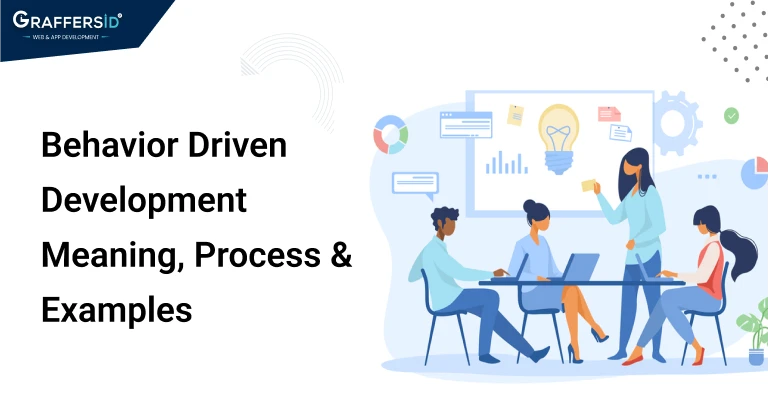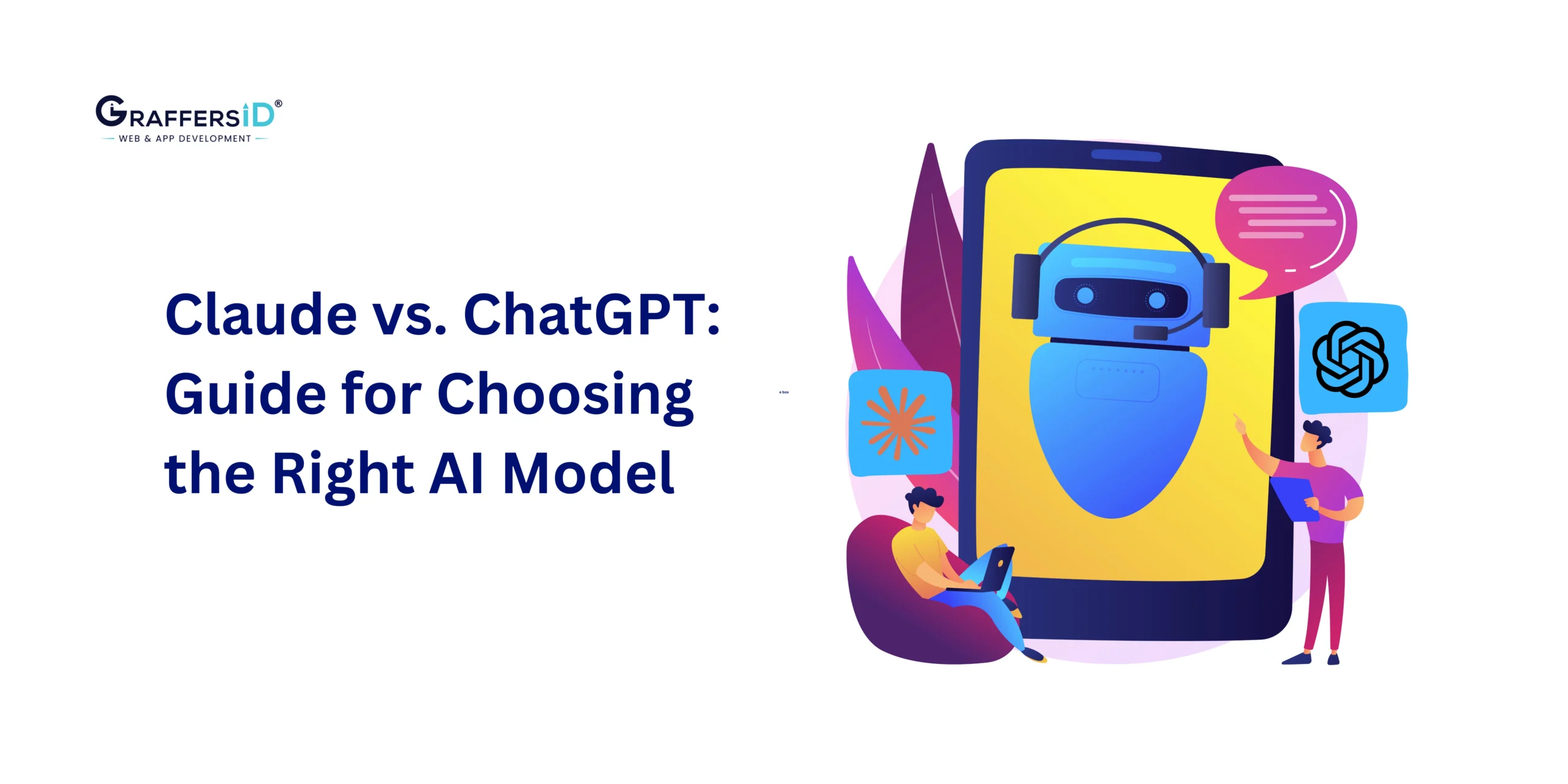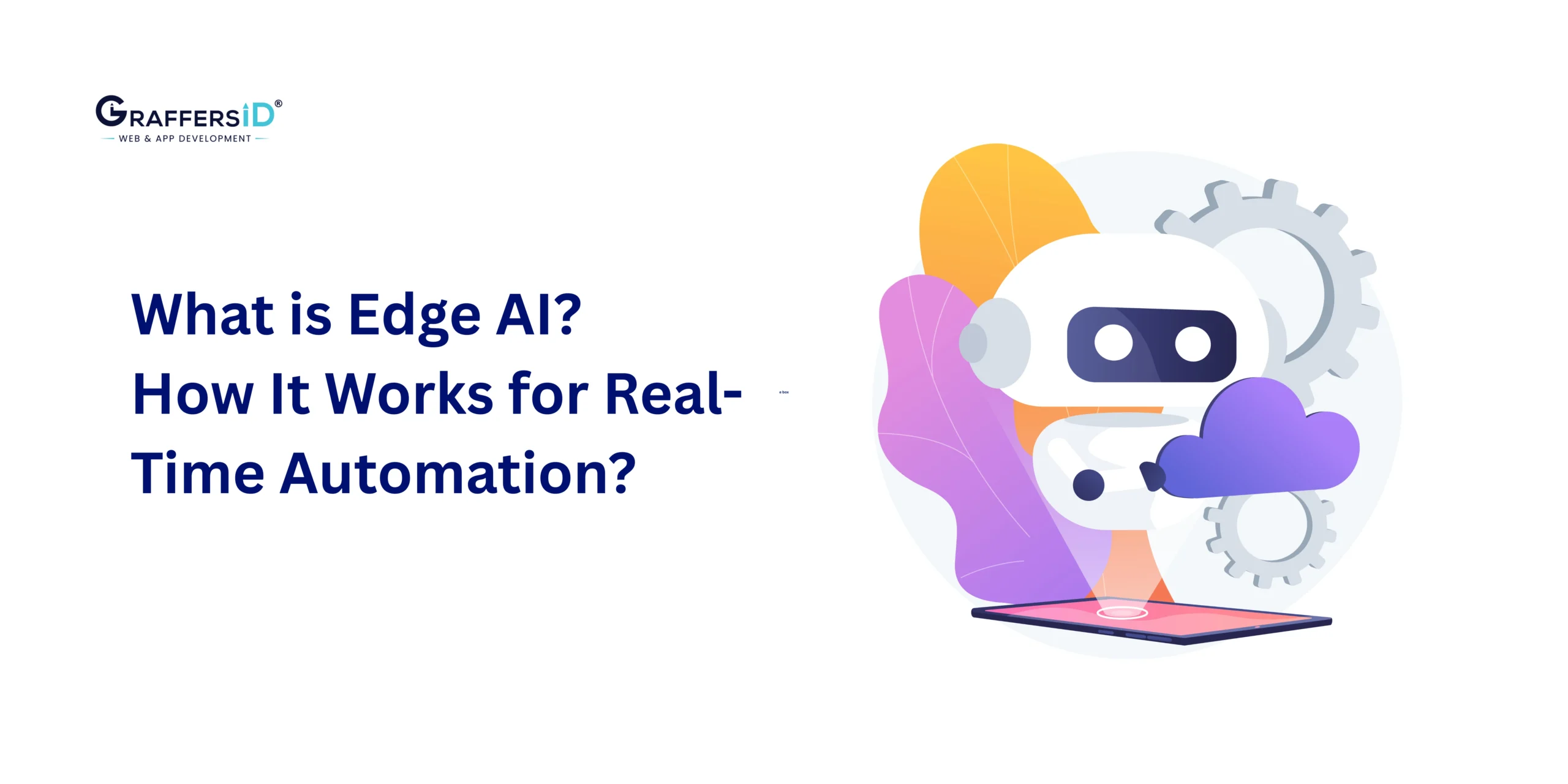In simpler terms, BDD (Behavior Driven Development) is a software development process to ease communication and fill the gap between technical people and business people. Supported by Cucumber, the BDD fills communication gaps by encouraging mixed collaborations in different roles to offer a shared understanding of the problem, working in small and fast iterations to improve the flow of value and producing system documentation that is auto-corrected by the system’s behavior.
The following guide is an introduction to BDD and the meaning and process involved in this framework. The guide will also state the benefits enjoyed by all-sized businesses using BDD and how to implement this structure without errors.
The Communication Gap In Digital Projects
When launching a new digital project, communications can not always be easy. Because the people developing it are highly technical, there might be slight communication errors between technical people and business people.
Such disconnect might arise between the business in designing desired technical outcomes, developers understanding the business needs, and businesses understanding the technical challenges.
Behavior Drive Development can help you channel these problems and achieve all of the above. In short, this development method allows the business and technical team to work together and meet the desired goals in time.
What Is Behavior Driven Development?: The Meaning
Software development is often associated with overwork which can also mean wasted time and effort for engineers and business professionals. The lack of communication and technical complexities can be challenging for the business professionals to understand their technical team’s limitations and for the technical team to understand and evaluate the business professionals’ expectations.
As a result, software development is often shrouded in miscommunication, where the end product might not always meet the exact requirements and expectations of the businesses. With a Behavior Drive Development framework, this can be changed.
In exact terms, BDD is a development process that aids the management and delivery of a project by improving the communication between business professionals and the technical team. BDD, thus, ensures all developers meet the company’s expectations and that companies understand their team’s limitations.
Read Also: Platform For iOS And Android App Development
Benefits Of Behavior Driven Development
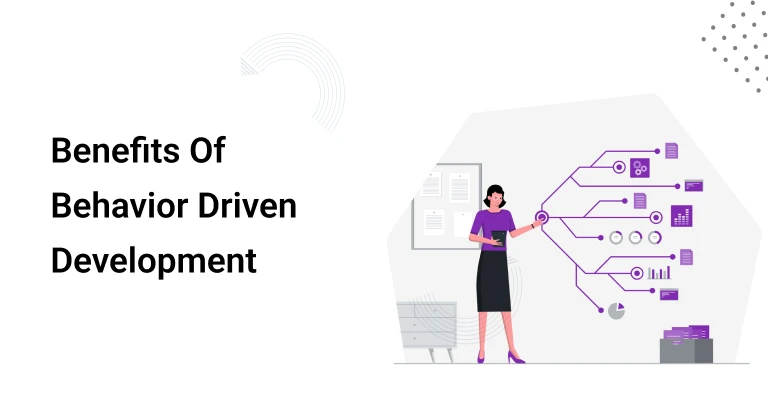
BDD can be a great way to face all limitations and communication gaps between the team and businesses and improve the software development process. Here are some of the most common benefits of Behavior Driven Development.
- Development goals can be tracked to core business objectives.
- Software development can meet the user needs that the business aims to cater to.
- BDD keeps all processes around critical features, business objectives, and prioritizations.
- All parties share a common understanding of goals and projects.
- BDD offers the use of shared language that enhances communication.
- It leads to the building of software designs that match current and future needs.
- It also allows for improved coding quality saves the cost of maintenance, and reduces risk.
If we talk about overall work, BDD’s work and approach can be divided into two different parts. The first one is the practice of using examples written in ubiquitous language to illustrate behavior. The second part is the usage of examples based on automated tests. So, in addition to ensuring proper functionality of the user, BDD also provides proper working of the systems as defined by the business through its projected lifespan.
A behavior-driven development framework ensures that business values and user requirements never come second.
If we talk about origination, BDD was introduced by experienced tech and organizational consultant, Dan North, from London. The fundamental goal behind this was to ease the communication between testers, developers, and business professionals.
Behavior-Driven Development Process: The Core Fundamentals
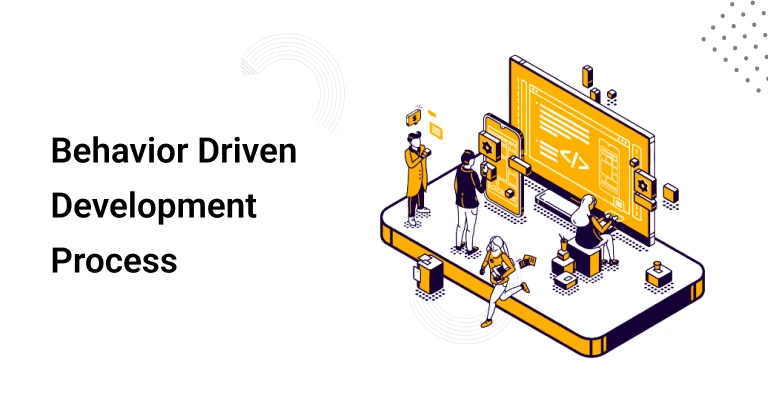
Here are the key features involved in the process of using BDD.
Starting With a Goal
In the simplest form, software development is just a way to automate human behaviors by replacing or creating them. Every behavior change can allow the business/company to accomplish its goals, like increasing revenue or improving usage.
When it comes to BDD, projects are accomplished in terms of set capabilities. These capabilities are software development features that allow users to be more efficient and meet all tasks on time. Some examples of capabilities can include automating warehouse management or automating order booking for an e-commerce business.
To meet the requirements established by the business, you must determine the software you can use to achieve these goals. These goals are called business goals in BDD.
The business goals you set must be SMART (Specific, Measurable, Attainable, Relevant, and Time-bound.) Here are some examples of establishing a business goal.
Poor Example: We want to generate more revenue by improving sales.
Good Example: We plan to achieve a 15% increase in revenue through online platforms within six months.
Having a SMART goal not only allows you and your team to work correctly and improve productivity but also allows businesses to measure the impact of an accomplished goal.
Impact Mapping
Once you have set a business goal with a predictive timeline, the next step is to plan how to achieve it. When it comes to software development, specific goals can easily be accomplished by adding a few features to the application. However, you need not always add plenty of features to the software. This is perhaps the number one reason why most software developments lead to failures. Developers should add features that will support users’ experience.
Moreover, while software might include hundreds of features, not all features require the same attention, detailing, and care. Developing every single feature closely can cost you a lot of time. Instead, focus on core features.
Impact mapping is a practice for managing a project roadmap and setting potential for the needed features. In short, impact mapping is a way that allows you to decide the alternative measures you can use to accomplish a goal. And the only way software development can come closer to achieving a goal is through supporting human behaviors.
Impact mapping is one step above conventional mind mapping. The process includes four different levels that contain business goals, one actor, one impact, and measures to support/prevent these impacts.
To start impact mapping, always start with business goals. Then you identify the actors, like the customers of the business for whom these goals need to be accomplished. These actors might help you or prevent you from achieving the goal. Moreover, they might have several ways to hinder or soothe the process of goal accomplishment.
The last level is identifying how the delivery team can support or prevent an impact.
Complexity and Value Analysis
When working on a behavior-driven development framework, it is highly important to distinguish priorities. This can be achieved using two techniques: value analysis and complexity analysis. Value analysis helps developers identify low-cost and high-cost features in software development. Complexity analysis, on the other hand, helps you choose the right development approach for individual features.
Cynefin, a complexity analysis BDD framework, is a sense-making tool that helps developers understand the problem and work towards it accordingly. Developers using BDD can use Cynefin to identify high-priority features and other features they can reuse from open-source libraries. The framework can be used for strategic planning and ensuring the usage of exemplary examples.
Planning in Examples
It’s often difficult to describe the most complex ideas in simpler terms to avoid any miscommunication or wrong expectations. And, communications shrouded in misunderstandings can lead to overwork or waste of effort. This can lead to an environment where the technical team keeps delivering goals that do not meet the expectations set by the company or business professionals.
So, what is the easiest way to eliminate miscommunications? We say to use examples. Understanding through examples is the earliest source of understanding kids go through every day.
For instance, if a team is assigned a task to add an “include VAT and delivery cost to the total order price” feature, you can use certain examples to understand the expectations of the business you are working with.
Usage-centered Designs
To build software that matters, you’ll need to understand how you will use it and why. In short, you would have to analyze the use of that particular software. Usage-centered design is a design approach where software is developed by keeping the users’ patterns and intentions in mind. In technical terms, users are grouped into abstract actors who interact with the software.
Usage-centered designs are the most critical aspect of BDD. Understanding the user needs can allow developers to build software that will cater to the needs. After all, understanding user behavior helps develop better software and meet all the needs.
Ubiquitous Language
When a team of technical and non-technical people is involved, communication is often complex. For instance, if a team is supposed to build a banking app, developers might be required to add the account feature. However, if they do not have enough interaction or experience with the business, the team might assume the account feature is a user management feature or user accounts feature.
If the miscommunication persists, the development team might spend long weeks in the development process that will never meet the set expectations. In this case, this problem is called the “cost of transaction”.
With BDD, you can eliminate this problem by reducing the feedback loops’ size and enforcing an example-based understanding for each needed feature. However, using examples might not suffice. Both sides will require a common language to communicate. Ubiquitous language, a concept borrowed by DDD, is a language created by the development team and business to ease the conversation flow. It is a mixture of business and technical language. This is a crucial part of BDD.
Read Also: The Importance of Effective Server Management
The Three Amigos
The most common mistake the development team makes is assuming that writing down the provided examples is important and assigning this responsibility to a single person. However, you must note that Behavior Driven Development is a highly collaborative way of development. This means, that writing down examples won’t suffice. The development would require the flow of different experiences and perspectives as well.
The three amigos: a business person, a developer, and a tester can solve this problem. A business person like a business analyst or product owner holds dominance over their industry. They can provide important insights to the development team using their experience.
Developers offer solutions to the respective business person. They usually belong to the “solution” space.
Testers, on the other hand, belong to the “problem” space. They identify flaws before development commences. These three are the core of BDD.
Behavior-Driven Development: A Few Examples
Examples stated in formal language are always easy to automate. This means you can outsource an example to an automation tool like Cucumber and allow it to provide automated specifications. These specifications can then be used by the developer for application development.
Here’s an example for a better understanding:
Scenario:
All refunded items should be returned to stock. For if there are four stockings in stock and a customer returns two stockings, the store should state a total of 6 stockings.
For this, developers can use a simple text-matching algorithm at each step inside the scenario added with a programming instruction that would automatically check the step premise by understanding the described behavior. This would create an executable specification while rendering an effective regression mechanism.
Top BDD Tools and Frameworks
DD tools and frameworks have become essential for developers, testers, and product owners to collaborate effectively and ensure the delivery of high-quality software. In this blog, we’ll explore the top BDD tools and frameworks that are transforming the way software is developed and tested.
-
Cucumber: The BDD Pioneer
Cucumber is undoubtedly one of the most popular and pioneering BDD tools. It allows teams to define application behavior using plain text scenarios written in Gherkin language. These scenarios can be easily understood by non-technical stakeholders, fostering collaboration. Cucumber supports multiple programming languages, including Java, Ruby, and JavaScript, making it versatile and widely adopted. Its extensive ecosystem and plugins make it an excellent choice for BDD enthusiasts.
-
SpecFlow: BDD for .NET
For teams developing applications on the .NET platform, SpecFlow is the go-to BDD framework. SpecFlow allows you to write scenarios in Gherkin and then bind them to your .NET code. This seamless integration with Visual Studio and tools like ReSharper simplifies the process of automating behavior tests. SpecFlow also provides extensive reporting capabilities, enhancing traceability and helping teams ensure that every requirement is met.
-
Behat: BDD for PHP
Behat is a BDD framework tailored for PHP developers. It enables you to write human-readable stories using Gherkin and then link them to PHP code. Behat is an excellent choice for web applications, as it offers built-in support for web testing using Mink. Its extensibility through various plugins and extensions makes it a flexible and powerful tool for PHP-driven projects.
-
JBehave: Java BDD Framework
Java developers can turn to JBehave for their BDD needs. JBehave encourages the use of plain text stories, and these stories are mapped to Java methods, allowing you to create executable specifications. With a strong focus on readability, JBehave helps maintain a shared understanding of software behavior among team members. Its rich ecosystem of plugins and extensions also contributes to its popularity.
-
Robot Framework: Versatile and Extensible
The Robot Framework is a versatile and extensible open-source test automation framework that supports BDD. It uses a tabular syntax for test case creation, making it highly readable. With its simple and extensible architecture, the Robot Framework allows easy integration with various application layers. Its built-in libraries, including Selenium and Appium, support both web and mobile application testing.
-
Karate DSL: BDD for API Testing
Karate DSL is a specialized BDD tool for API testing. It simplifies the creation of HTTP requests and validation of responses using a Gherkin-like syntax. Karate also supports data-driven testing and allows you to combine API and UI tests in one framework. Its unique feature set makes it an excellent choice for teams focusing on API development and testing.
-
Gauge: Lightweight and Scalable
Gauge is a lightweight and scalable BDD framework designed for cross-platform test automation. It supports multiple languages, including Java, C#, Ruby, and Python. Gauge’s unique approach to test specification and extensibility through plugins has garnered attention in the BDD community. It encourages writing specifications in Markdown, making it easy for non-technical stakeholders to contribute.
Common Mistakes to Avoid in Behavior-Driven Development
BDD revolves around defining the expected behavior of a system through well-defined specifications or user stories. While BDD offers numerous benefits, many development teams still make common mistakes that can hinder its effectiveness. Let’s delve into these mistakes and discuss how to avoid them for successful BDD implementation.
-
Neglecting Effective Communication
Effective communication is the foundation of BDD. BDD encourages collaboration among cross-functional teams, but often, communication breakdowns can occur. These can lead to misinterpretations, scope creep, and missed requirements. To avoid this mistake, teams should emphasize clear communication through techniques like Example Mapping and Three Amigos sessions. This ensures that everyone is on the same page and understands the expected behavior of the software.
-
Skipping the Discovery Phase
Some teams rush into writing executable specifications without fully understanding the problem or user needs. This neglect of the discovery phase can result in ambiguous or incomplete requirements. To prevent this mistake, invest time in discovering and defining the problem space. Engage stakeholders, conduct user interviews, and define user personas. A well-defined problem leads to more accurate specifications.
-
Overloading Scenarios with Details
Another common mistake is over-specifying scenarios. BDD scenarios should focus on the expected behavior, not on implementation details. When scenarios become overly detailed, they become brittle and difficult to maintain. Keep scenarios high-level and concentrate on the “what” and “why” rather than the “how.” This allows for greater flexibility and adaptability as the implementation evolves.
-
Ignoring Test Data Management
Test data management is often overlooked in BDD. Test data is crucial for running automated tests, but many teams fail to maintain a clean and organized data set. Neglecting this aspect can lead to unreliable test results. To avoid this mistake, establish a process for managing test data, including creating scripts for data setup and teardown, and ensuring that your data is versioned alongside your code.
-
Failing to Automate Testing
BDD is most effective when automated tests validate the behavior of the software. Some teams make the mistake of relying solely on manual testing, which can be time-consuming and error-prone. Automating your BDD tests using tools like Cucumber or SpecFlow not only saves time but also provides fast feedback during development and reduces the chances of human error.
-
Writing Unreadable Scenarios
Scenarios written in an unreadable or ambiguous manner are a common mistake in BDD. The purpose of BDD is to create scenarios that are easily understandable by non-technical stakeholders. If scenarios are written in complex language or contain jargon, they defeat the purpose. To avoid this mistake, follow the Given-When-Then structure, use plain language, and keep scenarios concise.
-
Neglecting Test Maintenance
Failing to maintain your BDD tests is a significant mistake. As the software evolves, your tests must also adapt to reflect the changes in behavior. Without proper maintenance, tests can become obsolete and start producing false positives or false negatives. Regularly review and update your scenarios to ensure their relevance.
Avoiding these mistakes will help your team create software that aligns with business goals and user expectations while fostering collaboration and efficiency.
Loops In Behavior-Driven Development
Regardless of the technology, platform, or language, you are using, one thing that remains constant throughout is the need for software to constantly adapt. With recent market changes, technical changes, and business outlook changes, the software must adapt well to ensure all user needs are met.
For this, current development projects must adapt to scenario-based test-driven technologies and development. However, this alone will not be enough.
To support slow growth and changes, software needs to adapt drastically and much faster. For instance, while optimizing a car for better performance, the team should be able to observe and impact individual features and elements of how it drives. In terms of BDD, this is called unit testing. It is a way to support significant changes in the behavior of the application.
In technical terms, these unit tests are small code threads that evaluate an isolated part of the system. To be particular, this thorough testing in BDD is called object specifications, where small isolated parts are treated as examples and are evaluated on how they react with the overall system.
Connect With GraffersID For Your Development Needs
Working as an offshore development center, we, at GraffersID, allow you to connect and outsource remote Indian developers for your development needs. From building hybrid software apps to developing stunning websites, our experts carry hands-on experience up their sleeves and a perfect set of soft skills.
Call us now to learn more.
